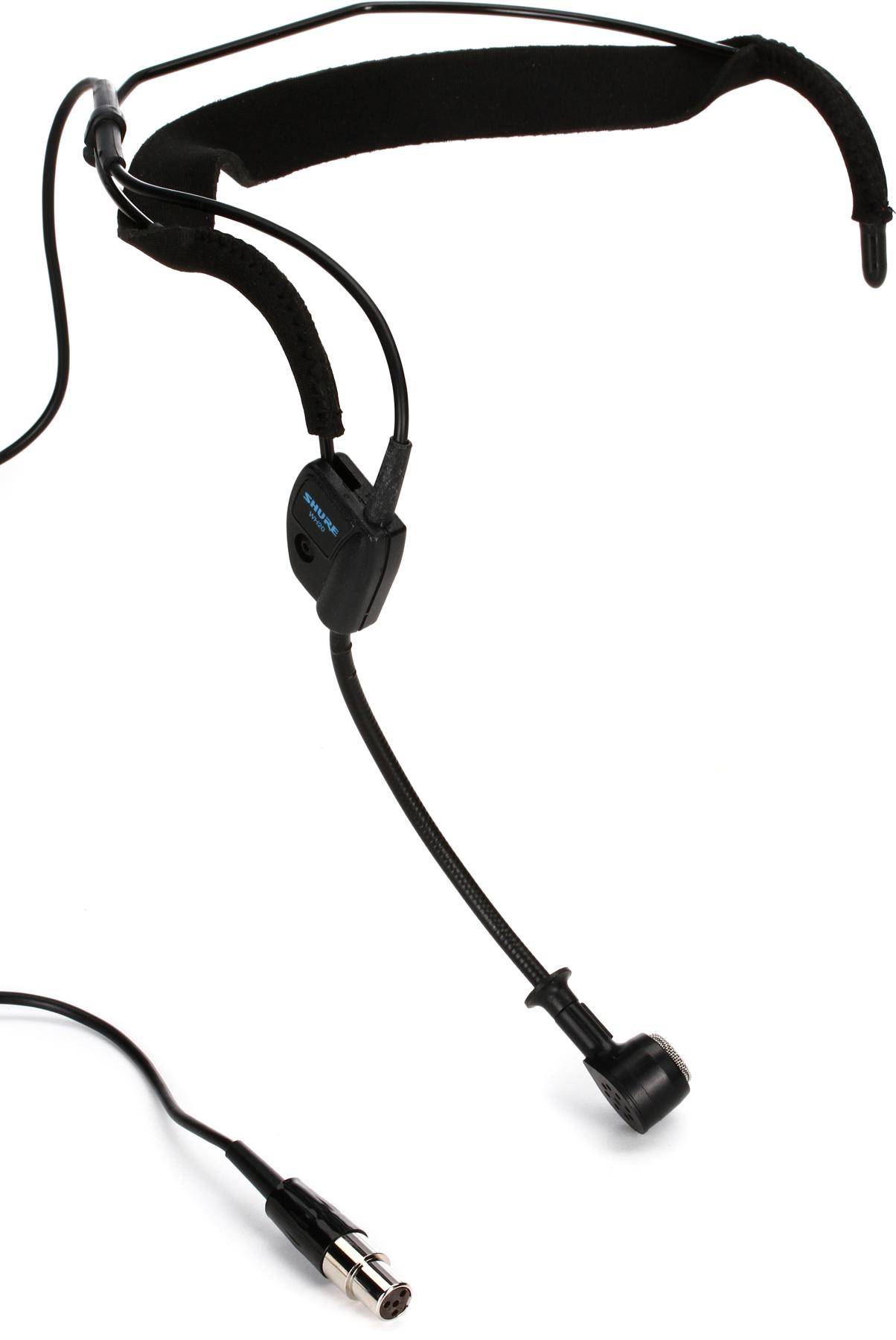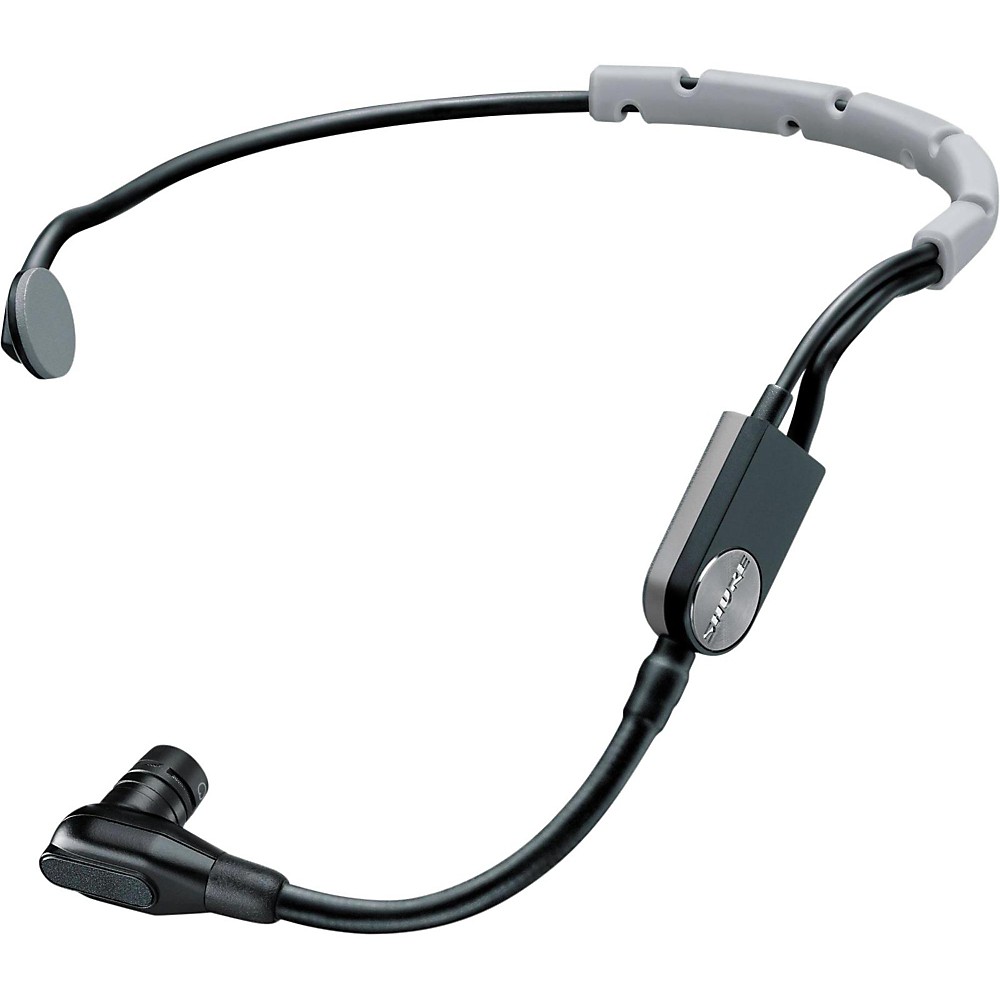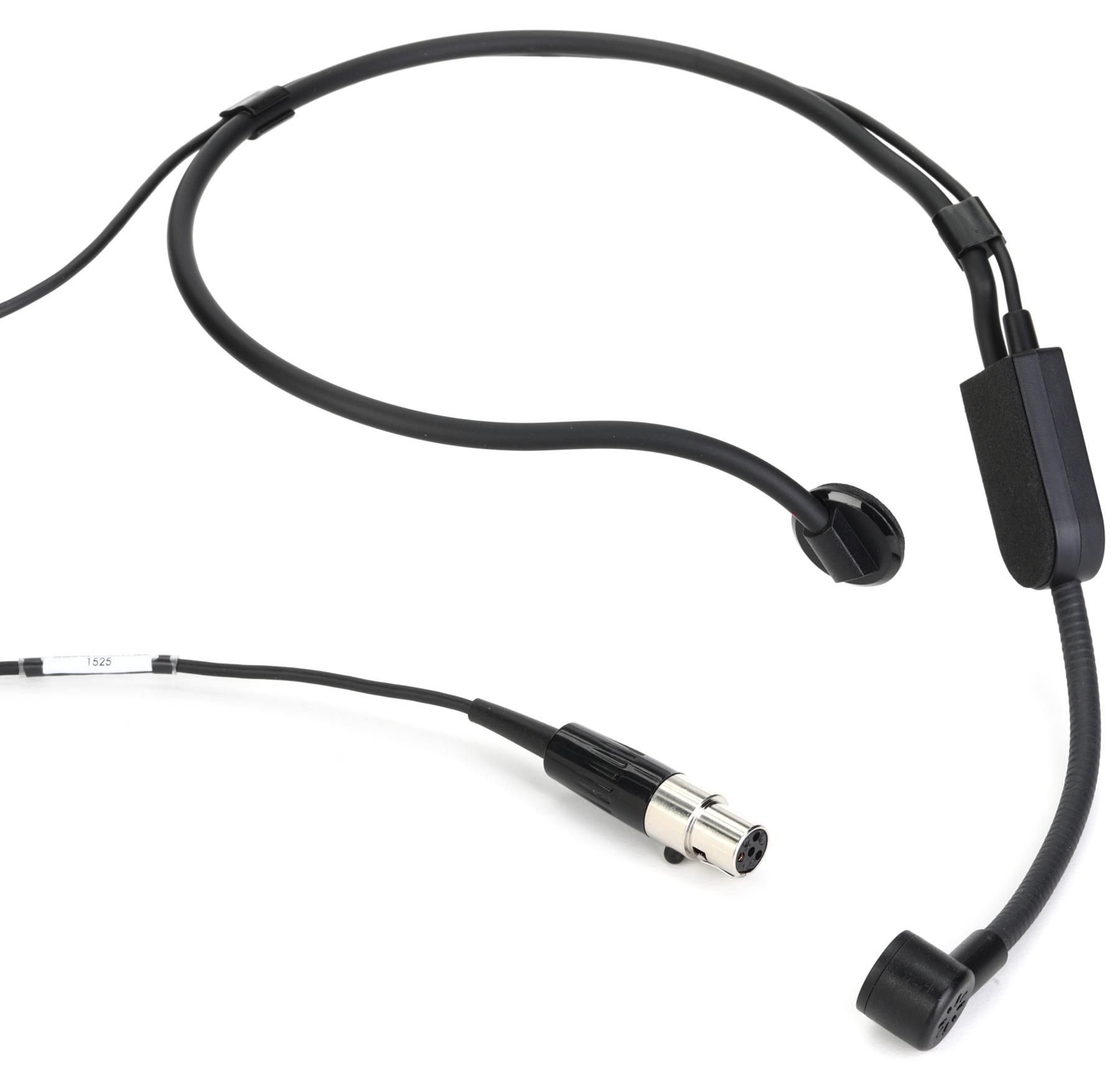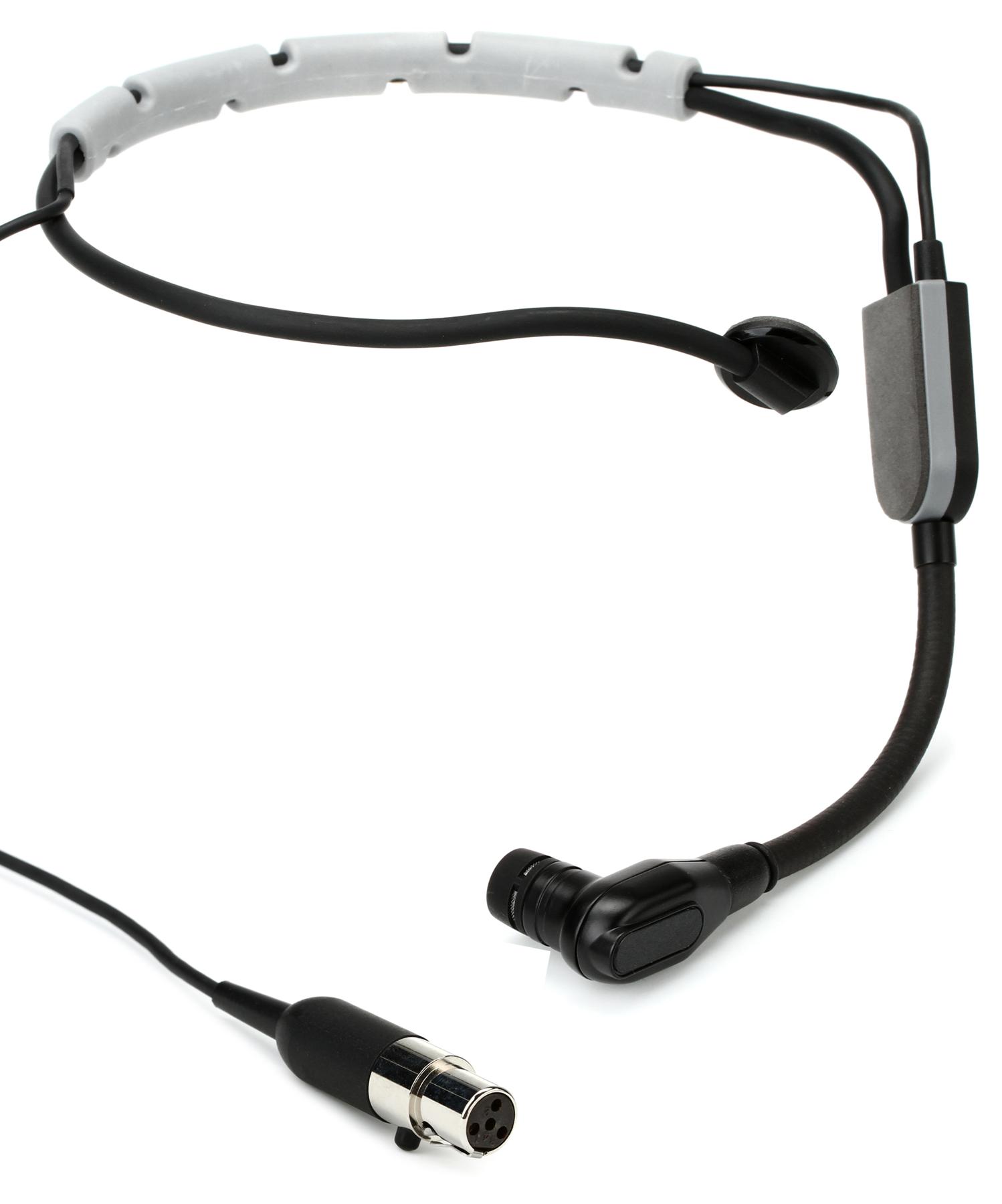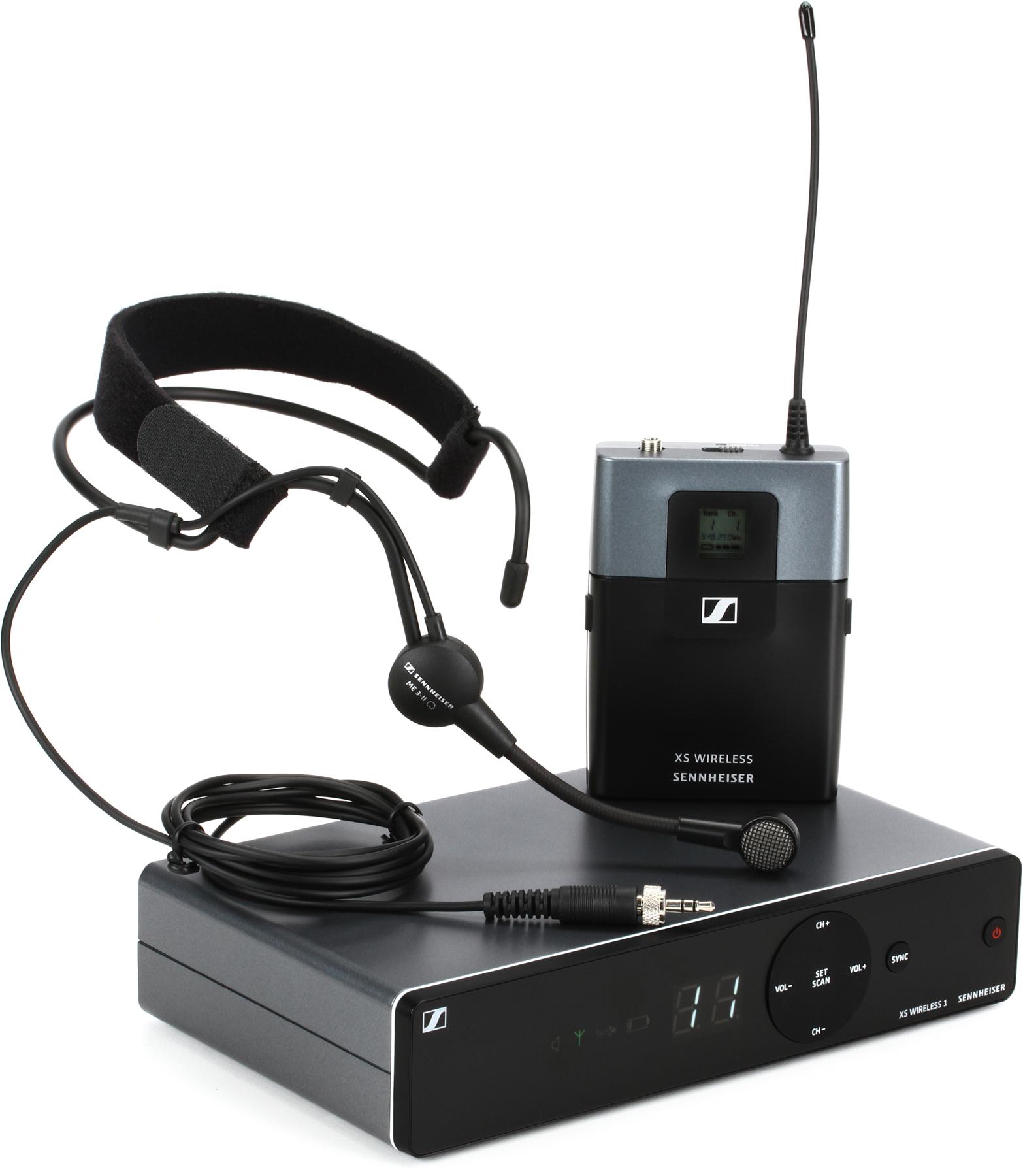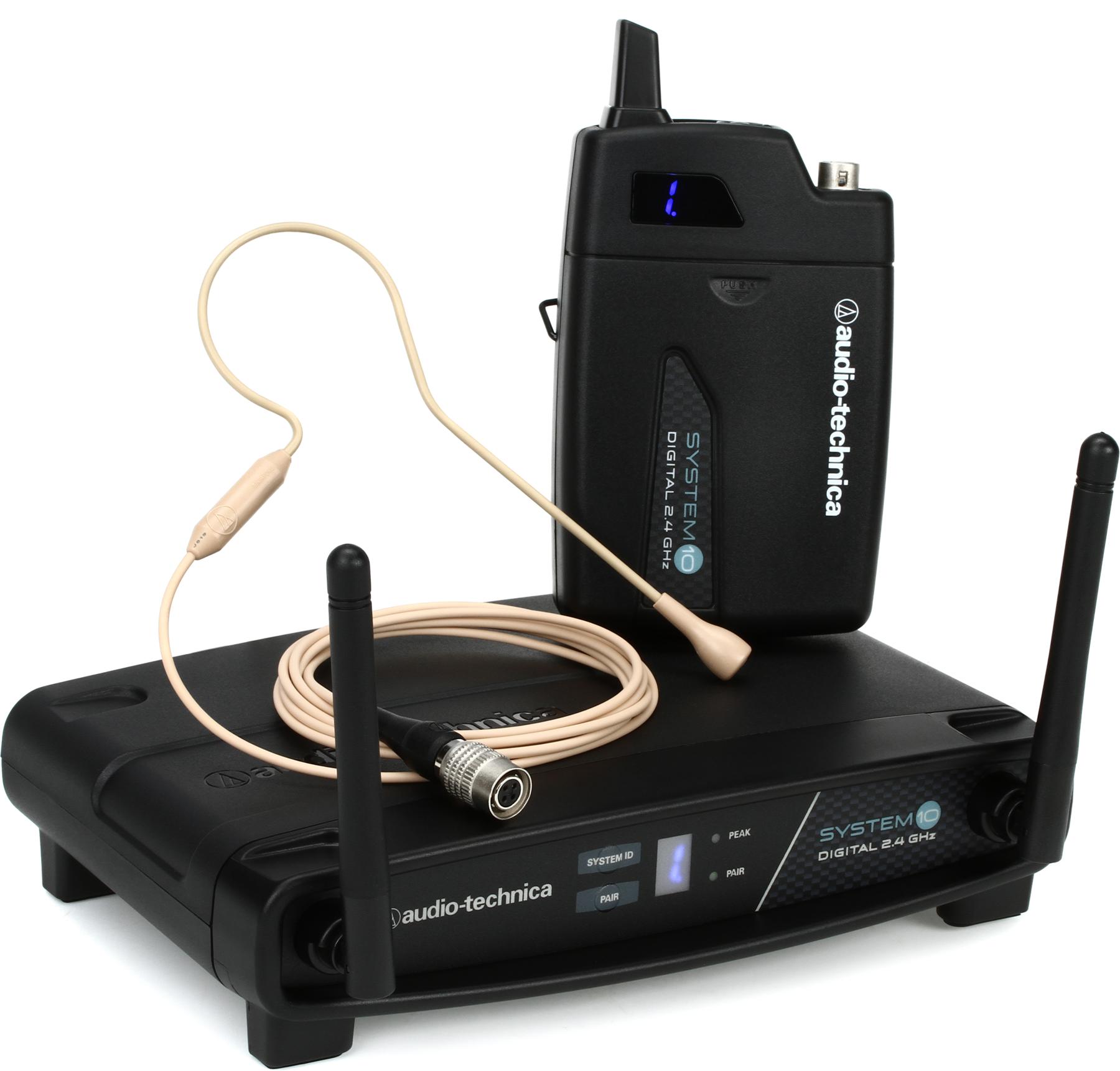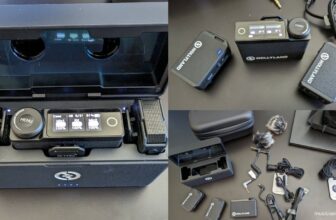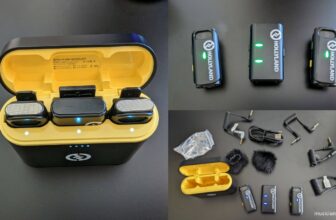The 8 Best Headset Mics for Singing (2024)
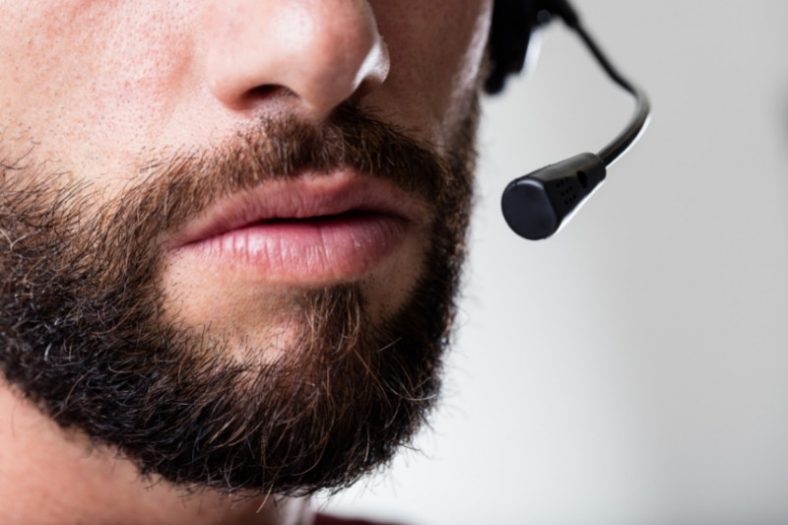
Headset microphones are great tools for live singing performances, giving the singers’ hands complete freedom. They are ideal for vocalists playing an instrument or moving a lot on stage.
Headset microphones need to provide high-quality sound reproduction as well as stable and comfortable head support.
My top pick is the Shure WH20XLR, which has a great balance between the price offered, comfort, reliability, and sound quality.
My budget pick is the Shure PGA31, which offers a great value for the price offered with its crisp and clear sound as well as decent frequency response range.
Contents
- The Best Headset Mics for Singing (2024) – At a Glance
- 1. Shure WH20XLR
- 2. Shure PGA31
- 3. Shure SM35
- 4. AKG C520
- 5. Sennheiser XSW 1-ME3 System
- 6. Countryman E6
- 7. Audio-Technica System 10 ATW-1101/H92-TH
- 8. JK MIC-J 071S
- What are headset microphones?
- Do headset microphones sound any good?
- How much mobility do you need for your headset mic?
- Is a headset microphone better than normal handheld microphones for singing?
- Are headset microphones comfortable to wear?
- What to look out for when buying?
- Summary
The Best Headset Mics for Singing (2024) – At a Glance
And now onto the full list:
1. Shure WH20XLR
The Shure WH20XLR is a great dynamic headset unidirectional microphone at an affordable price. It is a lightweight and barely visible headset microphone that comes with a belt clip to prevent it from falling. The mic is highly sensitive with a high input clipping level to get rid of audio distortions.
Pros
- Lightweight and comfortable
- Sensitive mic with crisp and natural sound
- Barely visible
Cons
- Is not designed to wear with glasses
- Volume output is relatively low
Another great feature of the headset is its comfort. Many drummers who do back-vocals prefer this headset for comfort and sound quality. The headset might not be comfortable to use with glasses.
| Headset Type | Dynamic |
| Directionality | Unidirectional |
| Connector | XLR |
| Cable Length | 4’ (1.2 m) |
| Battery Type | 1 x Lithium-Ion Battery |
Overall, the Shure WH20XLR offers great quality for its price, with a high-quality microphone, a comfortable and sturdy design, and valuable features.
2. Shure PGA31
Another Shure product, the PGA31, is my budget pick for entry-level users and musicians who do not want to spend much on a headset mic. It is a simple unidirectional condenser microphone that gets the job done with a high-quality natural sound and comfortable use.
Pros
- Great value for the price
- High-quality natural sound
- Comfortable
- Great noise reduction
Cons
- Big headset, easily noticeable
- Not a very sturdy construction
The sound quality of the Shure PGA31 is more than satisfying with crisp and clear tones. It is a great headset for studio recording as well as live shows. The letdown is that it is a big headset that is easily noticeable, while its construction is not the highest quality. For the price, these are acceptable cons.
| Headset Type | Condenser |
| Directionality | Unidirectional |
| Connector | TA4F |
| Cable Length | 4.2’ (1.28 m) |
| Battery Type | 1 x Lithium-Ion Battery |
The Shure PGA31 features a great value-for-price ratio with a decent sound quality suitable for beginners. It is mainly designed for studios but can be used on stages as well with its cardioid polar pattern and great noise reduction system.
3. Shure SM35
The Shure SM35 is the SM57 of headset microphones which means it is one of the most preferred industry standard models. It is considered one of the best headset microphones for singing. The SM35 is a unidirectional condenser cardioid headset microphone that comes in wireless or wired models.
Pros
- Great feedback prevention and noise reduction
- Windshield included
- High-quality sound with an extensive frequency range
- Wireless and wired are models available
Cons
- Big and not very adjustable headset, can be uncomfortable for some
For studio applications, it is a great microphone as the sound is top-quality and crisp. The noise reduction system is great, while the windshield prevents any wind or breath noises. The mic’s frequency response range is also great, which is between 40 Hz to 20 kHz.
The only letdown is that the headset is relatively big and is less adjustable than other models making them a bit more uncomfortable. But this is not a big issue.
| Headset Type | Condenser |
| Directionality | Unidirectional |
| Connector | TA4F / Wireless |
| Cable Length | 3.75’ (1.14 m) / Wireless |
| Battery Type | Cord-powered / Rechargeable Battery |
The Shure SM35 is one of the most preferred headset mics for a reason. It has many valuable features, great sound quality, and good noise reduction. Overall it is a great condenser headset mic for singer-instrumentalists.
4. AKG C520
The AKG C520 is a professional cardioid condenser headset microphone with great sound quality and noise reduction. It is a lightweight and comfortable headset mic, ideal for dancers and drummers. You can also place it to the left or right using the fully adjustable gooseneck.
Pros
- High-quality sound and noise reduction
- 10’ (3 m) long cable
- Wide frequency range
- Comes with windscreen
- Lightweight and comfortable
Cons
- Not a very stealthy headset
- A bit pricey
The AKG 520 has an extensive frequency range from 60 Hz to 20 kHz. It is a highly sensitive mic with a good noise cancellation which is great for any kind of live performance. Furthermore, it comes with a long cable, moisture shield, adjustable headband, and a windscreen.
It is a lightweight yet big headset that is clearly noticeable. It is not the best headset if you are looking for a discreet one. Another con is that the AKG 520 is a pricey model, not for tight budgets.
| Headset Type | Condenser |
| Directionality | Unidirectional |
| Connector | XLR |
| Cable Length | 10’ (3 m) |
| Battery Type | Cord-powered |
If you are looking for a professional grease, top-quality cardioid condenser headset mic to liberate your hands in the studio and on stage, the AKG 520 is a great choice.
5. Sennheiser XSW 1-ME3 System
The Sennheiser XSW 1-ME3 wireless head-worn mic system is a professional system that includes the ME 3 Headset mic, an SK-XSW Bodypack transmitter, and one EM-XSW receiver. It’s a pro-grade purchase that delivers quality sound.
Pros
- Professional audio quality
- Easy to use
- 1-button scan & sync for easy setup
- Intuitive indicators
- Aesthetic appearance
Cons
- Pricey system
This mic system is incredibly easy to use and set up due to the 1-button scan and & sync feature. As you’d expect from Sennheiser, this system truly delivers. With the ability to produce a clear and sharp sound, this headset is a great choice for singers.
| Headset Type | Condenser |
| Directionality | Cardioid |
| Connector | 1/8″ mic, 1/8″ transmitter, 1 x XLR, 1 x 1/4″ receiver |
| Cable Length | N/A |
| Battery Type | Power Supply, Transmitter battery 2 x AA |
Overall, the XSW 1-ME3 system is an excellent choice even for the given price. It features intuitive icon-based indicators, an appealing/sleek look, quality audio, and can be used with up to 10 systems simultaneously!
6. Countryman E6
The Countryman E6 is a unique-design high-quality headset microphone that is barely noticeable. Its wireless system, lightweight, and comfortable design make it an ideal choice for the highest mobility on stage. The mic is omnidirectional, which means it isolates the voice successfully.
Pros
- Lightweight, comfy, and stealthy headset
- Highly durable
- Clear and natural sound
- Great noise cancellation
Cons
- Pricey mic
The omnidirectional mic is held by a very flexible boom which you can adjust to place the mic near your mouth in the ideal position. It will receive the voice without feedback or any noise.
The sound quality is natural and clear, and the noise cancellation is nearly perfect. The E6 has many models, including different colors, different boom-flexibility levels, sensitivity levels, and cable diameters.
| Headset Type | Condenser |
| Directionality | Omnidirectional |
| Connector | TA4 / Mini XLR 4-Pin – Wireless |
| Cable Length | 5′ (1.5 m) |
| Battery Type | Power supply |
The E6 is one of the highest-end mics on the list, but it’s the ideal choice for maximum mobility on stage. Thanks to its elegant, tiny, and discreet design, it is barely visible to the audience. But of course, you will need to buy a separate transmitter to use this microphone, which adds to the price. You can choose the model according to your transmitter.
7. Audio-Technica System 10 ATW-1101/H92-TH
The Audio-Technica System 10 ATW-1101/H92-TH shines with its top-notch audio quality and user-friendly design. It is a lightweight and comfortable headset mic with an automated frequency selector, wide frequency response range, and extensive wireless range. It is a great option for stage use.
Pros
- Great audio quality
- Wide frequency response range
- Lİghtweight and comfortable
- Highly user-friendly
Cons
- Relatively short battery life
The 20 Hz-20 kHz frequency range, omnidirectional mic with great noise cancellation, and easy setup and calibration process make this mic user-friendly and ideal companion on stage. It comes with a receiver and transmitter, which provide a great wireless range.
The only letdown of this head-worn microphone is the short battery life. The battery lasts around 2-3 hours which is relatively short for a headset microphone.
| Headset Type | Condenser |
| Directionality | Omnidirectional |
| Connector | AT cW4 |
| Cable Length | 4.6’ (1.4 m) |
| Battery Type | 2 x AA |
All in all, the Audio-Technica System 10 ATW-1101/H92-T is fair-priced, especially if you consider you are getting a complete set of gear, including a great-sounding headset mic to liberate the hands-on stages.
8. JK MIC-J 071S
The JK MIC-J 071S is one of the most affordable headset mics on the list and market, which is an omnidirectional condenser mic with an elegant headset design. The headset is barely visible, comfortable, and lightweight, making it also a great choice for musical actors and actresses.
Pros
- Very affordable option
- Lightweight and comfortable
- Elegant, stealthy design
- Good value for the price
Cons
- The quality doesn’t measure up to other competitors
Although this headset can not compete with high-end models, it features a great value when the price is considered. It has a relatively decent audio quality with clear and crisp sound. It is quite comfortable and is barely noticeable, thanks to its stealthy design.
| Headset Type | Condenser |
| Directionality | Omnidirectional |
| Connector | XLR |
| Cable Length | 4’ (1.2 m) |
| Battery Type | Power supply |
It is a great mic to use with low to moderate volumes in relatively quiet environments as, with high volumes and in loud environments, feedback may become an issue. Also, the offered product is only the headset mic. It is compatible with many transmitters and receiver brands and models, but you will need those gears to use the mic.
What are headset microphones?
A headset microphone is a microphone attached to a head apparatus to liberate the hands of the singer. This way, the singer has more mobility on the stage to dance, move around, or play his/her instrument. Headset microphones can be any type of microphone with a wired or wireless system.
Do headset microphones sound any good?
Headset microphones specially designed for music and vocal performances sound as good as other types of microphones. However, headset microphones are often used for gaming, online conferences, and calls, as well as public and talk shows. These headsets have lower audio qualities than music ones.
How much mobility do you need for your headset mic?
Headset mics are designed to give the singer maximum mobility on the stage. That is why the more mobility you have, the better. If you are not going to move on the stage, a 4’ (1.2 m) cable will often be enough. But, if you are after more mobility and action, you should go for a wireless headset mic.
Is a headset microphone better than normal handheld microphones for singing?
Headset microphones stay fixed in a position when you’re singing. This leads to a loss of dynamics you create with handheld microphones, moving the microphone to different positions. Although headset mics are great for mobility on stage, most singers sing better with handheld mics.
With headset mics, singers need to sing differently to create dynamics with different techniques. That is why many singers who like to move a lot on the stage, use a combination of headset mics and handheld mics to avoid this issue.
Are headset microphones comfortable to wear?
Headset microphones are specially designed to be comfortable for long periods of use. The high-quality models are often lightweight, comfortable, and tiny to make the singer feel as natural as he/she can. Most headset mics are flexible and adjustable to personalize for different heads and face sizes.
What to look out for when buying?
When buying headset microphones, you should look out for the sound quality, comfort, durability, and price. The most important factors for professional use are audio quality and comfort, as you will need a natural and clear-sounding device that feels comfortable on your face to use for hours.
Sound quality is the most crucial factor with any microphone. You have to go for a natural, clear, and crisp-sounding microphone with a good noise-cancellation system. There are dynamic and condenser microphones with omnidirectional and unidirectional systems.
The condenser mics are much more sensitive than dynamic mics, which better reproduce all the frequency ranges. But, they are also more prone to feedback issues and background noise.
Unidirectional mics receive the sound only from the front, while omnidirectional mics receive the sound from all directions. That is why omnidirectional mics are sensitive but, again, are more prone to feedback and background noise. If you think of going for a condenser and omnidirectional microphone, you have to be careful that it has a good noise cancellation system.
Also, check the frequency response range of the mics. The more extensive the range, the better for the singer, as it means the mic will recognize and reproduce many different frequencies successfully.
Comfort is another important factor as you will be wearing these headsets for long periods. You have to feel comfortable to perform well. You should look for a lightweight and tiny headset mic with as much flexibility as possible to feel comfortable.
Construction is important too, as nobody wants to buy a product that would get broken or damaged after a few uses. Furthermore, the cable length and the wireless system are also things to look out for in headset mics. A good range of wireless systems means more mobility on the stage.
And finally, the price is an important factor too. If you do not want to spend a small fortune on a headset mic, go for the models with a better value-for-price ratio. Consider your needs carefully to sacrifice some features on your device.
Summary
Headset microphones are ideal types of mics to give your hands freedom on the stage. Whether you play your instrument, dance, or simply move a lot on the stage, a headset mic can make your life much easier, giving you the chance to sing with your hands doing their thing.
My top pick is the Shure WH20XLR dynamic microphone which features a stealthy design, great sound quality, and comfort for a reasonable price, along with the Shure quality and reliability.
My budget pick is the Shure PGA31 condenser mic, which shines with its value-for-price ratio, thanks to its good audio quality and comfortable design.

